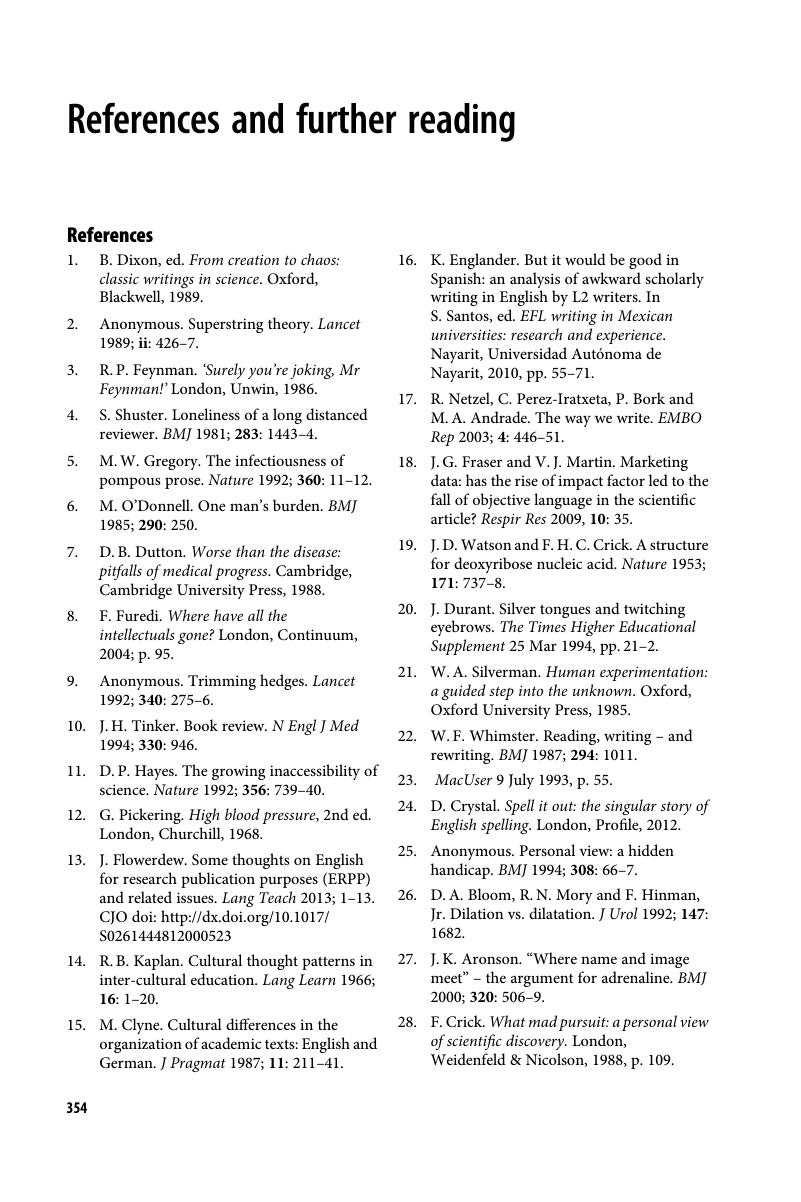Book contents
- Frontmatter
- Dedication
- Epigraph
- Contents
- Foreword
- Preface to the fourth edition
- Layout of the fourth edition
- Preface to the first edition
- Acknowledgements
- Part I Problem: the illness
- Part II Solution: symptomatic relief
- Part III Practice: recuperation
- Appendix British–American English
- References and further reading
- Index
- References
References and further reading
Published online by Cambridge University Press: 05 September 2014
- Frontmatter
- Dedication
- Epigraph
- Contents
- Foreword
- Preface to the fourth edition
- Layout of the fourth edition
- Preface to the first edition
- Acknowledgements
- Part I Problem: the illness
- Part II Solution: symptomatic relief
- Part III Practice: recuperation
- Appendix British–American English
- References and further reading
- Index
- References
Summary

- Type
- Chapter
- Information
- Medical WritingA Prescription for Clarity, pp. 354 - 357Publisher: Cambridge University PressPrint publication year: 2014



